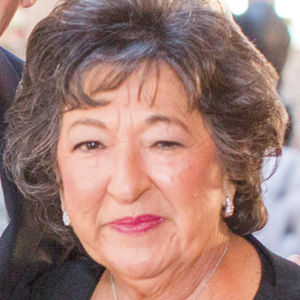Native American art helps us challenge our history
Published July 2, 2020
During this weird, difficult time, I am thinking back to some very special exhibitions and talks that I attended shortly before the world started to tilt. Native Americans are already a marginalized group in our country and have faced serious challenges for many years. The COVID-19 pandemic has caused great suffering in many Native American communities.
Last September, I attended an inspiring and educational talk titled “Mound City: The Place of the Indian Past and Present in St. Louis” given by Patricia Cleary, a professor of history at California State University, Long Beach, at the Missouri History Museum. Cleary referred to the ground under the museum as the place where the indigenous Mississippian culture lived and thrived almost a thousand years ago. She went on to talk about the need to pay homage and give respect to those ancient peoples and their descendants in our city today.
A week later, I found myself at the Nasher Museum of Art on the campus of Duke University in Durham, N.C, where I was inspired again by a special exhibition called “Art for a New Understanding: Native Voices, 1950s to Now.”
Sarah Schroth, then the director of the museum (she retired in May), also referred to the land around the museum as having belonged to the native people of North Carolina and said, “By presenting (the exhibition) and its related programs, we are taking the first steps towards acknowledging those who were here first and who are still here.”
The Nasher Museum says of its exhibition, which closed in January: It was “the first to chart the development of contemporary indigenous art in the United States and Canada. For generations, Native North American artists have exhibited work mostly outside mainstream art institutions. ‘Native Voices’ begins to remedy that division, presenting approximately 60 works of art in a wide variety of media by Native American artists from many nations and regions.”
The wall texts are as inspiring as the works themselves. I’ve decided to quote some of the artists’ thoughts and feelings.
Wab Kinew of the Anishinaabe people, from the anthology “Dreaming in Indian,” says:
“There is no one indigenous perspective … no one indigenous story. We are tremendously diverse peoples with tremendously diverse life experiences. We are not frozen in the past, nor are we automatically just like everybody else. That is why it is so important for everyone to share their own story. In revealing their personal truths, they help us all gain a better appreciation for the messy, awesome, fun reality of the world we live in.”
Native American artist Fritz Scholder says: “Somebody needs to paint the Indian differently because it is a subject matter that is probably the world’s worst cliché, at least in this country.”
Another wall text reads:
“Today, there are more than 570 federally recognized Native tribes in the United States. In Canada, there are more than 600 recognized First Nations, Inuit and Metis government or bands. Although the term ‘indigenous’ is used to describe all of these groups, each has their own distinct culture.”
And Kathleen Ash-Milby (Navajo), then-associate curator of the National Museum of the American Indian, said, “There is no one way to be a native artist” in her reference to Cherokee painter Kay WalkingStick’s use of minimalism with an indigenous twist.
Sometimes, the Native artists reexamine history. Kent Monkman takes inspiration from 19th century U.S. art to challenge how the past has been presented. Monkman says: “Most of my work challenges history, or rather dominant versions of history. Western artists looking at indigenous art, indigenous people, indigenous cultures.” His work in the exhibition is a re-creation of a Bierstadt landscape painting.
Terms such as “traditional” and “contemporary” often are used side by side. Melissa Cody who grew up in the Navajo Nation in Arizona says, “I can still hold true to traditional roots in terms of my materials, my process, but also have the final product be reflective of my personal story as a contemporary young woman growing up both on a reservation and also in an urban setting in the city.”
There have been specials on Native American life and culture on PBS with very profound messages. One young man said, “We are always referred to in the past tense, but we are still here. What took place a thousand years ago continues. We’d like to share what we know to make a better world.”
We just need to listen to and look at Native Americans and challenge the way we interpret our history. And now is really the time to do a lot of thinking.
For more of Nancy Kranzberg’s commentary, listen to KWMU (90.7) St. Louis on the Air the first Friday of each month at approximately 12:50 p.m. She also hosts a weekly Arts Interview podcast for KDHX (88.1), available at artsinterview.kdhxtra.org.














